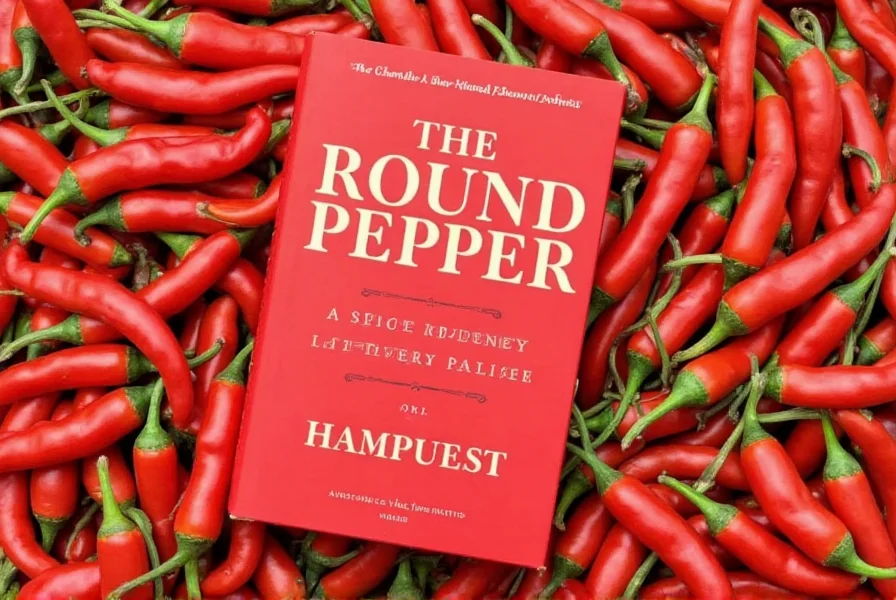Table of Contents
Introduction to the Red Bell Pepper
Red bell peppers are a sweet, vibrant variety of bell peppers known for their rich color and natural sugar content. Unlike spicy chili peppers, red bell peppers contain virtually no capsaicin (the compound that creates heat), making them one of the sweetest pepper varieties available. They are a versatile vegetable used in salads, roasting, grilling, and various cooked dishes worldwide.
As bell peppers mature from green to yellow, orange, and finally red, their sugar content increases significantly, resulting in a sweeter, fruitier flavor profile. This makes red bell peppers ideal for enhancing dishes with natural sweetness rather than heat. Whether you're a beginner cook or experienced chef, understanding how to select and prepare red bell peppers can elevate your culinary creations.

Practical Tips for Using Red Bell Peppers
Here are practical tips to maximize the sweetness and versatility of red bell peppers in your cooking:
- Roasting for Sweetness: Roasting red bell peppers intensifies their natural sugars and adds smoky depth. Place them on a baking sheet, drizzle with olive oil, and roast at 400°F (200°C) until the skin blisters. After cooling, peel off the skin for use in sauces, dips, or salads.
- Stuffed Peppers: Red bell peppers make excellent vessels for stuffing. Fill with rice, quinoa, beans, or lean proteins for a nutritious, colorful meal. Their sturdy structure holds fillings well during baking.
- Seed Removal for Texture: While red bell peppers have no heat, removing seeds and membranes creates a smoother texture for raw applications like salads or crudités.
- Freezing for Convenience: Cut peppers into strips or dice and freeze in airtight containers. Frozen red bell peppers retain their sweetness and work well in soups, stews, and stir-fries.
- Raw in Salads: Their crisp texture and sweet flavor make red bell peppers perfect for fresh salads. Pair with tomatoes, cucumbers, and feta cheese for a refreshing Mediterranean-style dish.
Culinary Uses and Flavor Profiles
Red bell peppers offer a unique sweet, fruity flavor that complements many dishes. Here are popular ways to use them:
Fresh Salsa
Combine diced red bell peppers with tomatoes, red onions, cilantro, lime juice, and a pinch of salt for a vibrant, sweet salsa. This pairs perfectly with tortilla chips or grilled fish.
Stuffed Peppers
Fill roasted red bell peppers with a mixture of quinoa, black beans, corn, and spices for a vegetarian main course. Bake until tender for a colorful, nutrient-rich meal.
Grilled Peppers
Grilling red bell peppers brings out their natural sugars and adds a charred, smoky note. Serve as a side dish, in sandwiches, or as part of a summer vegetable platter.
Pepper Relish
Make a tangy sweet relish by chopping red bell peppers with vinegar, sugar, and spices. This condiment enhances burgers, hot dogs, or grilled cheese sandwiches with its bright flavor.
Buying Guide: How to Choose the Best Red Bell Peppers
Selecting ripe red bell peppers ensures maximum sweetness. Here's what to look for:
What to Look For
- Color: Look for deep, uniform red color without green or yellow patches. Darker red indicates full maturity and higher sugar content.
- Texture: Peppers should feel firm and slightly glossy with smooth skin. Avoid soft spots, wrinkles, or dull appearance.
- Weight: Heavier peppers for their size indicate higher water content and better freshness.
Where to Buy
Find red bell peppers at most grocery stores, farmers' markets, and specialty produce sections. Organic varieties often have more intense flavor. Look for peppers with intact stems for longer freshness.
Best Uses for Different Colors
| Color | Sweetness Level | Best Use |
|---|---|---|
| Red | Very High | Raw salads, roasting, sauces |
| Yellow | Medium-High | Salsas, stir-fries, grilling |
| Orange | Medium-High | Roasting, baking, fresh salsas |
| Green | Low | Cooked dishes, stir-fries, sautéing |
Comparing Red Bell Peppers with Other Varieties
While red bell peppers are popular, understanding differences between bell pepper colors helps you choose the best for each dish. Here's a comparison:
| Pepper Type | Sweetness Level | Flavor Profile | Best Use |
|---|---|---|---|
| Red Bell Pepper | Very High | Sweet, fruity, rich | Salads, roasting, sauces |
| Yellow Bell Pepper | Medium-High | Sweet with citrus notes | Salsas, stir-fries, grilling |
| Orange Bell Pepper | Medium-High | Sweet with tropical notes | Roasting, baking, fresh salsas |
| Green Bell Pepper | Low | Bitter, grassy, crisp | Cooked dishes, stir-fries, sautéing |

Frequently Asked Questions
How sweet are red bell peppers compared to other varieties?
Red bell peppers are the sweetest bell pepper variety, with a Scoville rating of 0-100 (virtually no heat). They contain approximately 3x more sugar than green bell peppers. Yellow and orange bell peppers are also very sweet but slightly less than red. All bell peppers are non-spicy and safe for those avoiding heat.
What's the best way to roast red bell peppers for maximum sweetness?
For optimal sweetness: 1) Char directly over gas flame or under broiler until blackened (5-8 minutes), 2) Place in sealed paper bag for 10 minutes to steam and loosen skin, 3) Peel under cold running water, 4) Slice lengthwise to remove seeds, 5) Marinate in olive oil with herbs for 24 hours before use. This method concentrates natural sugars while developing complex roasted notes.
Can I substitute red bell peppers in recipes calling for bell peppers?
Yes, but consider sweetness differences. Red bell peppers work best in raw applications (salads, salsas) where their sweetness shines. For cooked dishes like stir-fries, green bell peppers provide a more robust flavor. Substitute 1:1 in most recipes, but reduce quantity by 20% in raw dishes if you prefer less sweetness.
How long do fresh red bell peppers last in storage?
Whole peppers stay fresh 2-3 weeks in the crisper drawer (40°F/4°C) when stored unwashed in perforated plastic bags. Sliced peppers last 5-7 days in airtight containers. For extended storage: 1) Blanch slices for 2 minutes before freezing (up to 12 months), 2) Roasted peppers keep 1 month in oil-filled jars (refrigerated), 3) Dried pepper flakes maintain potency for 6 months in dark containers.
Why do some red bell peppers taste sweeter than others?
Sweetness depends on three factors: 1) Ripeness - fully mature red peppers contain 3x more sugar than green counterparts, 2) Growing conditions - warm days (80-85°F/27-29°C) with cool nights (60-65°F/15-18°C) maximize sugar development, 3) Variety - cultivars like 'Red Marconi' or 'Sweet Sunrise' are bred for high sugar content. Post-harvest, storing at room temperature for 2-3 days increases sugar content by 15-20%.
Conclusion
Red bell peppers are a sweet, versatile vegetable that adds vibrant color and natural sugars to any dish. Unlike spicy chili peppers, they contain no heat, making them accessible for all palates. Their high sugar content develops fully when ripe, creating a fruity, rich flavor perfect for raw applications and roasting.
By selecting deeply colored peppers, using proper storage techniques, and understanding how different colors affect flavor, you can maximize the sweetness and versatility of red bell peppers in your kitchen. Whether in salads, sauces, or stuffed dishes, this nutrient-rich vegetable enhances meals with its natural sweetness and beautiful color.
Red bell peppers are a must-have for any home cook seeking to add sweetness and color without heat. With the right preparation, they can become a staple ingredient that elevates everyday meals.










 浙公网安备
33010002000092号
浙公网安备
33010002000092号 浙B2-20120091-4
浙B2-20120091-4